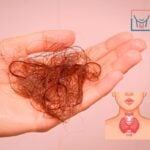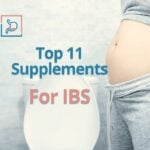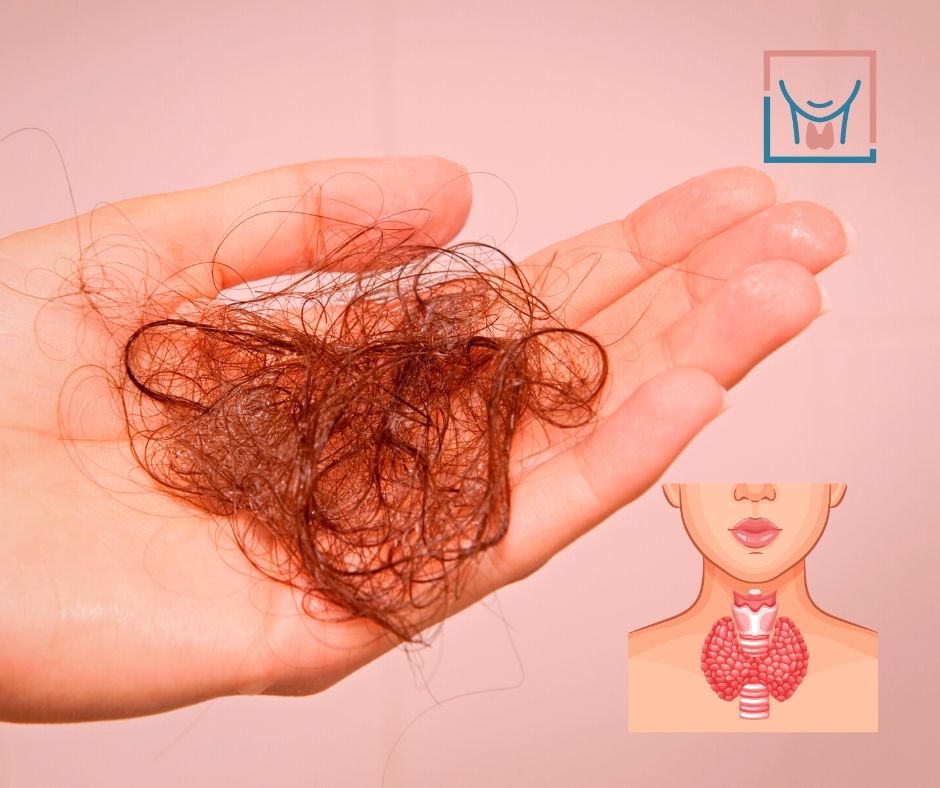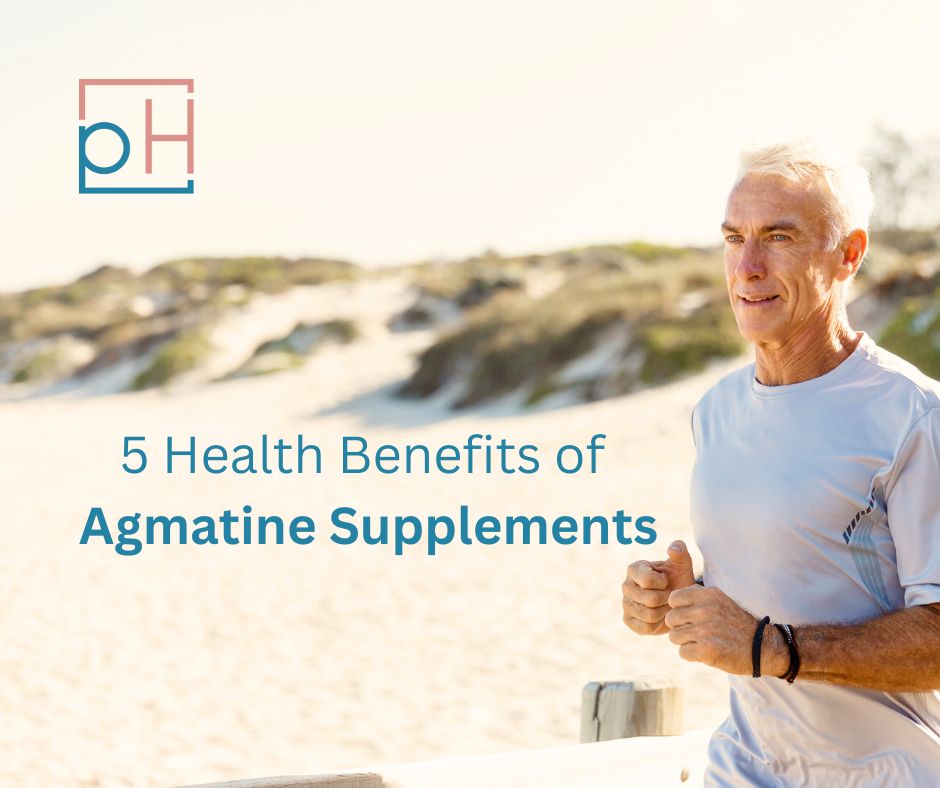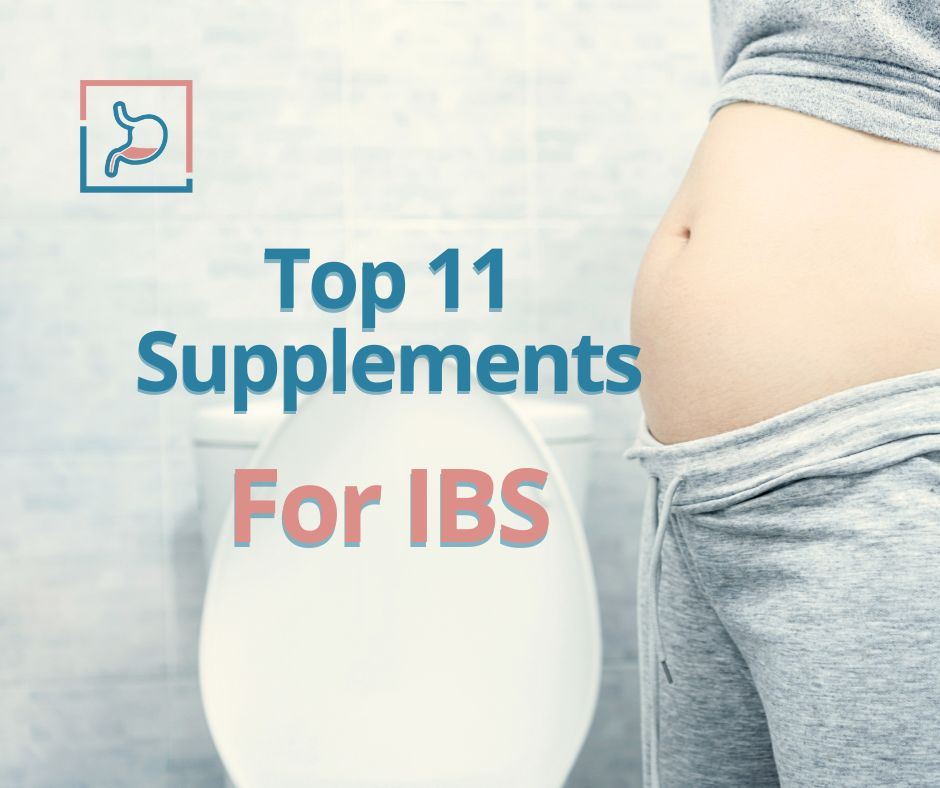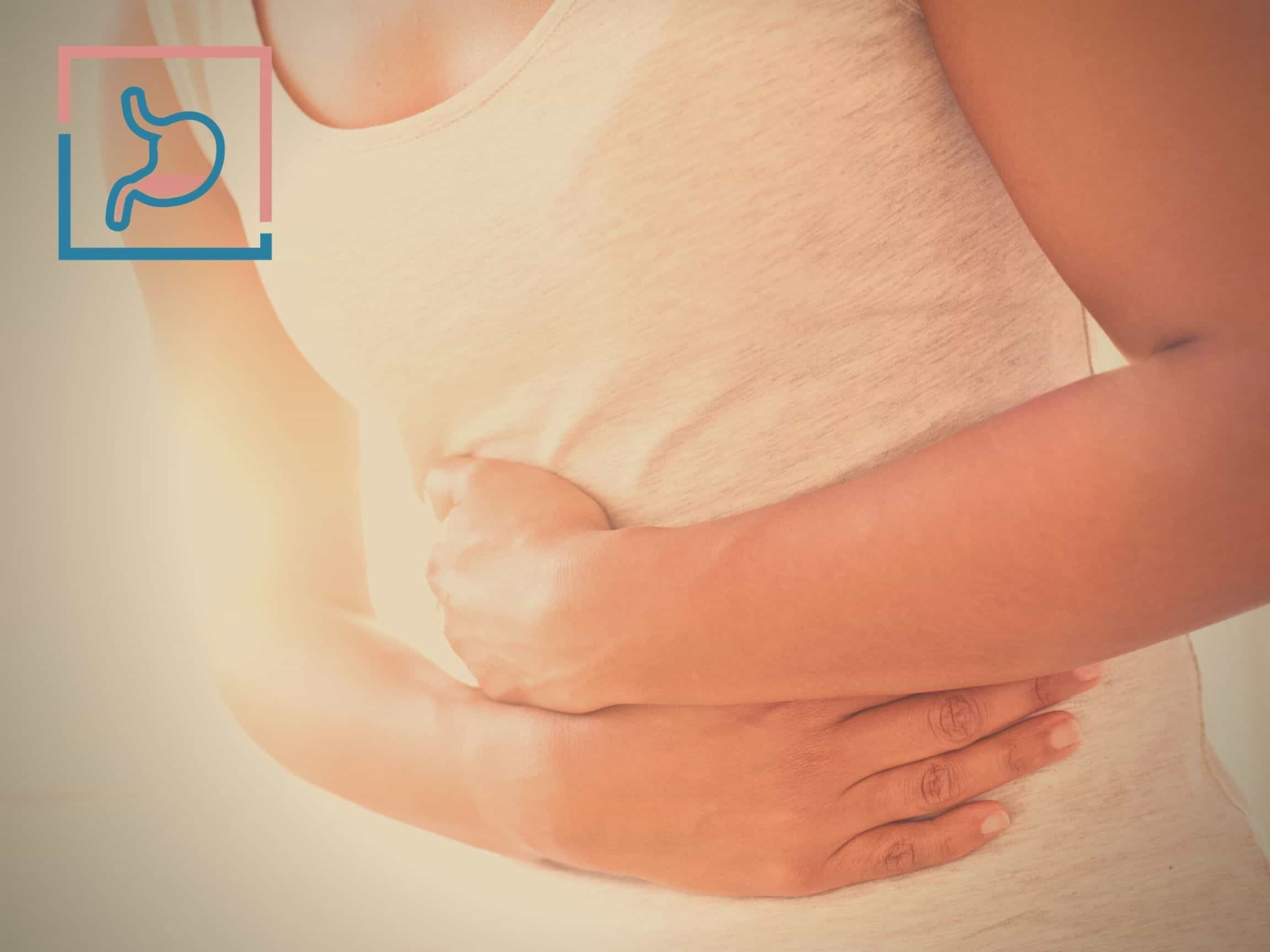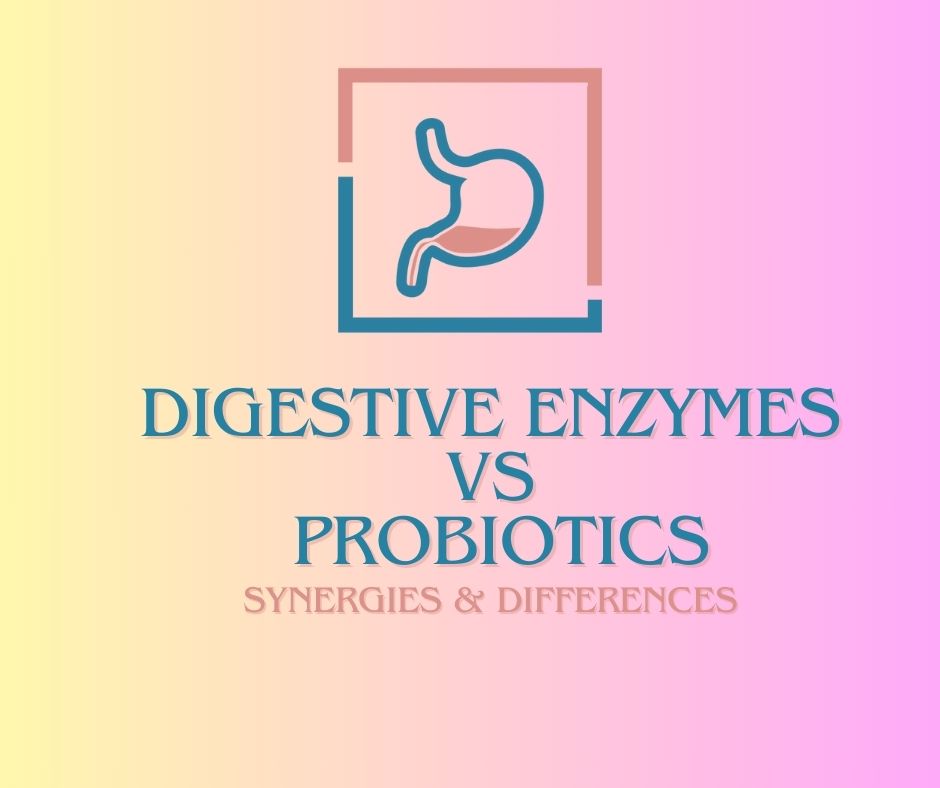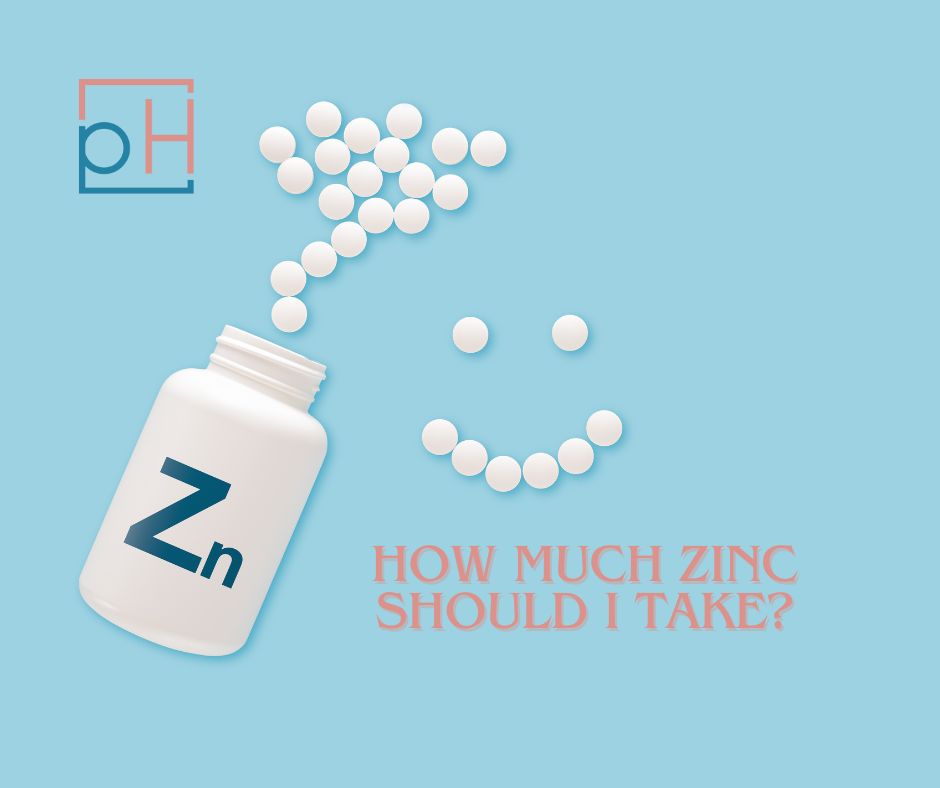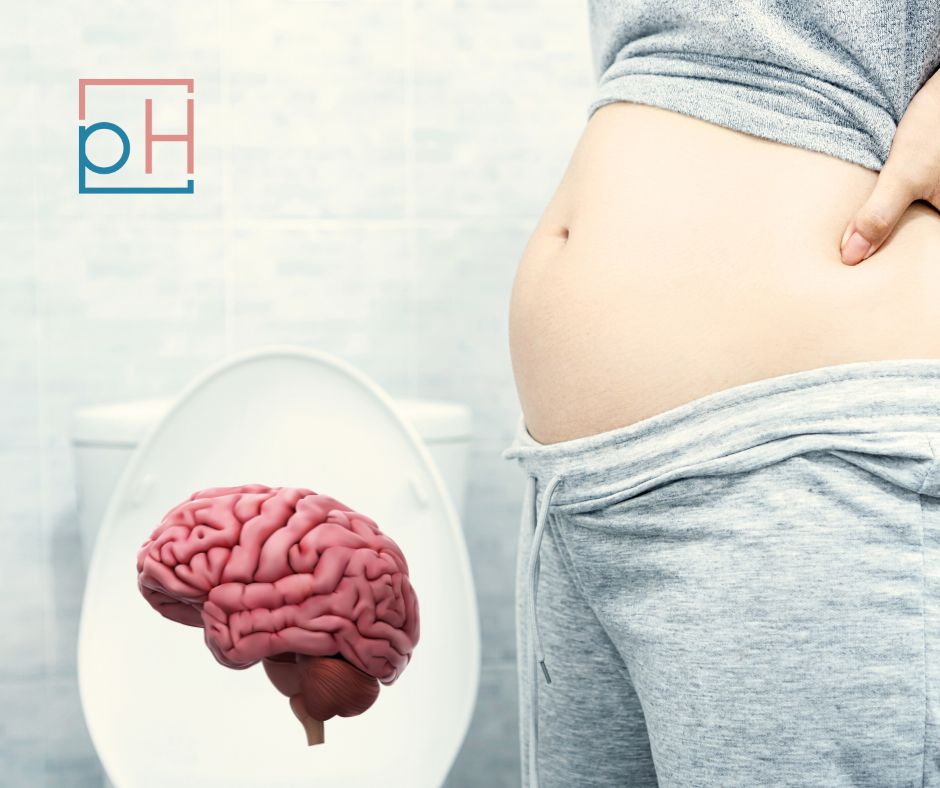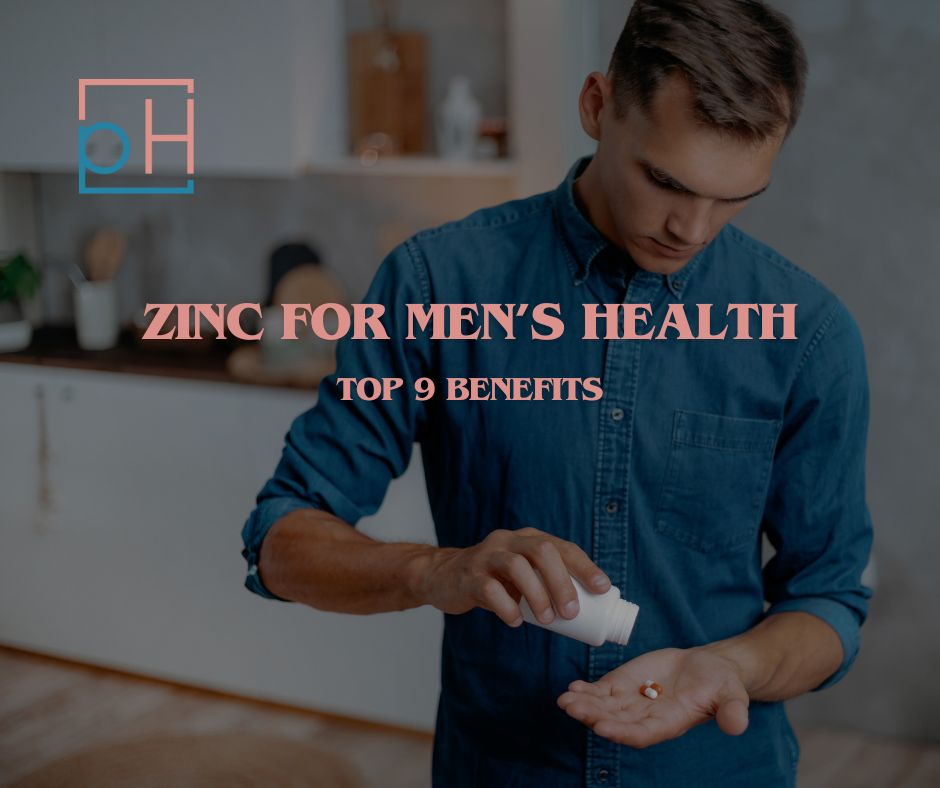Testosterone is a sex hormone that impacts overall health in both men and women. Low levels of testosterone (often referred to as “low T”) can cause symptoms like:
- Low libido (lack of a sex drive)
- Problems getting or keeping an erection
- Decreased body hair/baldness
- Loss of lean muscle mass
- Chronic fatigue
- Lack of motivation or drive
- Obesity
- Mood issues and brain fog
As you age, your body produces less testosterone. Many other issues can also reduce T, from using anabolic steroids to not eating enough calories every day to clinical hypogonadism (a failure of the testicles to produce enough testosterone).
A holistic approach to achieving and maintaining healthy testosterone levels includes a total lifestyle overhaul, from changing the foods you eat to using testosterone-boosting supplements. In many cases, the medication Clomid may help your body make testosterone on its own. In some cases, testosterone replacement therapy may be necessary in order to boost levels.
I’ve compiled a list of the 10 best ways to naturally increase testosterone levels. Let’s dive in!
Do you struggle with low T and want help reclaiming your masculine edge? Colorado residents, visit PrimeHealth for a comprehensive plan to increase testosterone and get back to living.
We may receive a small commission from products you purchase via links in this article.
1. Follow a Hormone-Friendly Diet
One of the most effective natural ways to boost testosterone levels is through a hormone-friendly diet. To optimize your diet for testosterone:
- Incorporate plenty of protein, such as chicken, fish, eggs, and plant-based options like organic tofu, nuts, and seeds to build and maintain muscle mass.
- Prioritize foods rich in vitamins and micronutrients, avoiding empty calories with no nutritional value. Oysters, beef, beans, red meat, seafood, and nuts are loaded with zinc, a mineral crucial for testosterone production.
- Consume fish rich in healthy fats, such as salmon, low-mercury tuna, and mackerel. These are excellent sources of vitamin D, a nutrient directly linked to healthy testosterone levels.
- Eat lots of plant-based foods, especially dark, leafy greens and pomegranates. Diets full of plant-based foods are associated with higher testosterone levels. Several plant compounds show “anti-aromatase activity,” meaning they block the enzyme aromatase that converts androgens to estrogen.
- Eat honey. The active compounds in honey have positive effects on various testosterone-related hormone levels, antioxidant activity, and gene expression.
- When balancing macronutrients, aim for similar amounts of protein and fat with fewer carbs. Low-carbohydrate, high-protein diets may actually decrease testosterone levels (although moderate protein, low-carb diets don’t have the same effect).
- Avoid processed foods, excessive sugar, and dairy when possible. Excessive sugar and processed foods can lead to weight gain and obesity, directly impacting testosterone levels. Some dairy is acceptable on a balanced diet, but too much can lead to hormonal imbalances.
- Don’t restrict your caloric intake for long periods. Undereating and very low levels of body fat are associated with low testosterone over a lifetime.
- Keep eating out and indulgent desserts to a minimum, both of which are lifestyle patterns connected with testosterone deficiency and hypogonadism.
Every person’s body is different, and there’s no one-size-fits-all dietary plan perfect for everyone. Work with a healthcare provider to learn what dietary approach is best for your body.
Read Next: The Carnivore Diet: Benefits, Risks & How to Follow
2. Exercise Regularly Without Overtraining
Exercise, particularly strength training and high-intensity interval training (HIIT), effectively increases testosterone production. However, you need to strike the right balance in your workout routine to maximize the benefits without falling into the trap of overtraining.
Weightlifting is a form of resistance training that boosts testosterone levels in the short term. Lifting weights stimulates muscle growth to promote the natural production of testosterone.
HIIT, known for its intense bursts of activity followed by rest, also increases testosterone levels.
Incorporate activities like running, cycling, or swimming with weightlifting sessions to create a well-rounded fitness regimen that supports hormone health. Don’t get too caught up in the type of exercise, and target consistency in your routine.
Intense exercise is healthy in moderation, but avoid overtraining. Too much exercise can diminish returns and reduce your testosterone levels, especially if you’re not eating enough calories. Reassess your workout regimen if you experience symptoms of overtraining like:
- Prolonged fatigue
- Decreased performance despite increased effort
- Insomnia
- Reduced appetite
- Mood swings
3. Maintain a Healthy Weight
Obesity is directly linked to lower testosterone levels, making weight management critical to men’s health. In general, people with obesity are at risk for a high number of chronic health conditions, many of which may impact testosterone and other hormones.
One issue with weight gain in men is that obesity reduces testosterone, and reduced testosterone also leads to more body fat buildup. It can become a vicious cycle for many men.
Excess body fat, especially around the abdomen, can increase the enzyme aromatase, which converts testosterone into estrogen. This conversion lowers testosterone levels and can also lead to further weight gain and associated health problems.
Following a balanced diet and staying physically active are the first steps towards weight loss. Practice mindful eating and talk to your healthcare provider about how to improve your relationship with food.
If testosterone is a primary concern, ask your provider about how to increase your testosterone levels naturally through weight loss, or if medications may be appropriate for you. There are significant side effects from long-term testosterone replacement therapy to consider, but in the short term, it may help you lose more fat than muscle.
Your doctor may discuss medications or surgical interventions to contribute to weight loss in extreme circumstances.
4. Reduce Stress
High stress levels lead to increased cortisol (the “stress hormone”), which can negatively impact testosterone production and contribute to infertility in men.
Ways to reduce stress and balance your nervous system include:
- Regular exercise: Physical activity is a powerful stress reliever. Activities like yoga, walking, or any form of exercise that you enjoy can help reduce stress levels.
- Mindfulness: Practices like meditation, deep breathing exercises, and mindfulness can significantly lower stress levels.
- Quality sleep: Getting plenty of quality sleep is essential for stress reduction. Aim for 7-8 hours of sleep each night to help your body recover and regulate stress hormones effectively.
- Activities that spark joy: Engage in hobbies or activities that bring you joy and relaxation. Whether it’s reading, gardening, repairing cars, or making music, taking time for activities you enjoy can be a great way to reduce stress.
- Social connections: Strong social ties and a supportive network can help alleviate stress and build up positive neurotransmitters like dopamine and oxytocin, even when your job or lifestyle feels overwhelming. Spend time with friends and family or join groups or communities that share your interests.
If you constantly feel depleted or anxious, talk to your primary care or mental health provider about how to cope. Therapy, stress-relieving supplements, and having a professional to talk to can go a long way in helping you calm your stress response.
Related: Can Hormones Cause Anxiety?
5. Prioritize High-Quality Sleep
The body produces most of its testosterone during sleep, particularly in the Rapid Eye Movement (REM) phase. Too little sleep or long-term low-quality sleep can lead to a significant reduction in testosterone levels. For best results, try to get 7-8 hours of sleep every night.
Restricting sleep for just one week can reduce testosterone by 10-15% overall.
Here’s how to enhance the quality of your sleep:
- Establish a regular sleep schedule: Aim to go to bed and wake up at the same time every day, even on weekends. Consistency reinforces your body’s sleep-wake cycle.
- Create a restful environment: Ensure your bedroom is quiet, dark, and cool. Consider using earplugs, blackout curtains, or a white noise machine to block out disturbances.
- Limit exposure to blue light: Reduce screen time on phones, tablets, or computers before bedtime. The blue light emitted by these devices can interfere with your ability to fall asleep.
- Mindful eating and drinking: Avoid large meals, caffeine, and nicotine before bed. These can disrupt sleep. Limit your fluid intake right before sleep to reduce nighttime trips to the bathroom.
- Physical activity: Regular physical activity can promote better sleep. However, avoid being overly active close to bedtime as it might have the opposite effect.
- Evaluate your sleep environment and bedding: Ensure your mattress and pillows are comfortable. The investment in quality bedding can significantly improve sleep quality.
- Avoid alcohol and heavy meals in the evening: These can disrupt sleep patterns and decrease the quality of REM sleep.
- Seek medical advice if needed: If you continue to have trouble sleeping, talk to your healthcare provider. Sleep disorders like sleep apnea can severely impact your testosterone levels, and it’s nearly impossible to self-diagnose these conditions.
Get deeper sleep with a temperature-optimized mattress. Visit Chili and enter code PHD25 for 25% off ChiliPAD or code PHD15 for 15% off the Ooler.
6. Avoid Substances that Deplete Testosterone
Certain substances you consume or are exposed to can reduce your testosterone. Avoid these things to maintain healthy testosterone levels:
- Alcohol (which may also impact sexual function)
- Tobacco products
- Excessive caffeine
- Recreational drugs (some, like psilocybin and MDMA, can be beneficial in microdoses)
- Prescription medications, such as opioids and antidepressants
- Endocrine disruptors including chemicals from plastics like BPA (bisphenol-A), which may mimic estrogen
- Pesticides (atrozine and glyphosate)
Alcohol consumption of more than 8 drinks per week is associated with lower testosterone levels.
Pesticides, like atrozine and glyphosate for example, have been shown to reduce testosterone and increase estrogen in males in animal studies.
You Don’t Need to Avoid Phytoestrogens
Phytoestrogens are plant-based compounds that mimic the structure of estrogen. Despite what you may have heard, research confirms that these compounds do not increase or change estrogen levels or activity in men.
7. Take Testosterone-Boosting Supplements
Some dietary supplements are natural testosterone boosters, including:
- Vitamin D: This vitamin plays a crucial role in hormone production, including testosterone. Vitamin D supplementation, especially if you know you have low vitamin D levels, can help increase testosterone.
- Zinc: Zinc supplements can be particularly beneficial for increasing total testosterone and supporting male fertility if you have a zinc deficiency.
- Magnesium: This mineral helps reduce the binding of testosterone to proteins in the blood, thereby increasing the availability of free testosterone.
- DHEA (Dehydroepiandrosterone): DHEA is a hormone produced by the adrenal glands, a precursor to testosterone. Supplementing with DHEA, especially before HIIT exercise, may increase free testosterone levels.
- Ashwagandha: This herb is known for its stress-reducing properties and ability to increase testosterone levels, particularly in men experiencing stress-related fertility issues.
- Fenugreek: Studies have shown that fenugreek can boost testosterone levels by inhibiting the conversion of testosterone into estrogen.
- Ginger: Ginger may enhance testosterone levels and improve fertility in men.
- Tongkat Ali (aka Longjack): According to a 2022 meta-analysis, this herbal remedy has a great track record increasing testosterone levels in men. This effect is magnified when the supplement is paired with exercise, especially in older men.
- Fadogia agrestis: In animal studies, fadogia agrestis increases testosterone levels and improves overall sexual function.
- Shilajit: Shilajit, a mineral product, may boost testosterone when taken in supplement form for 90 days.
Read Next: Ginseng vs. Maca
8. Watch for Early Signs of Diabetes and Heart Disease
Low T increases your risk of developing diabetes or various forms of heart disease. Pay attention to any early warning signs and address any issues that may arise, as having full-blown diabetes or cardiovascular disease may lead to further decreased testosterone.
Early signs of diabetes include:
- Increased thirst and urination
- Unexplained weight changes
- Fatigue and irritability
- Blurred vision
- Poor insulin sensitivity
- Craving sugar and carb constantly and feeling dizzy when abstaining
- Erectile dysfunction
Early signs of heart disease include:
- Chest discomfort
- Shortness of breath
- Pain in arms, shoulder, elbows, jaw, or back
- Dizziness or fainting
- Elevated blood pressure
Failing heart health sometimes occurs without notable symptoms. However, you’re at higher risk for cardiovascular disease if you have metabolic syndrome (a cluster of symptoms including high blood pressure, high blood sugar, excess body fat around the waist, and abnormal cholesterol levels). That’s why regular health screenings are vital for early detection.
Maintaining a healthy diet, exercising, avoiding smoking and excessive alcohol, and managing stress are key to preventing these conditions and supporting healthy testosterone levels.


9. Talk to Your Doctor About Clomiphene or Enclomiphene
Clomid (clomiphene citrate), an FDA-approved medication to treat female infertility, can also help to increase testosterone levels in men. It works by stimulating the body’s natural testosterone production pathway. It’s particularly effective for men experiencing symptoms of low testosterone caused by hypogonadism, which is the majority of men with low T.
Enclomiphene has the same mechanism of action as clomiphene, and can be prescribed from a compounding pharmacy. Due to shortages of clomiphene lately, we have been using Enclomiphene with our male patients with equally great results.
A 2023 study showed significant increases in testosterone levels in men treated with 25-50 mg of Clomid daily. Participants reported improvements in sexual function and quality of life. Most of our male patients taking Clomid only need to take it 2-3 times per week to achieve optimal levels and reap the benefits.
In another clinical trial, researchers compared TRT with Clomid for improving testosterone levels. While both medications raised testosterone at similar rates, TRT was associated with improvements to libido, but Clomid was not.
A later study found that the major benefits of using Clomid for testosterone are seen later than expected (after about 9 months of treatment). Compared over a longer span of time, these medications may offer similar benefits for low T.
They must be prescribed off-label when given to men because these medications are not FDA-approved for treating low testosterone levels. Despite this, Clomid and Enclomiphene are safe and affordable medications and typically cause no adverse effects when used to raise testosterone levels.
One major benefit of using Clomid or Enclomiphene to improve testosterone levels in men instead of testosterone replacement therapy is that, instead of reducing sperm count, they increase it. TRT is known to reduce and sometimes completely halt sperm production, which is a very negative side effect, especially for men who are hoping to conceive in the future.
10. Try Testosterone Therapy
Testosterone Replacement Therapy (TRT) for men with hypogonadism or significantly low testosterone levels is a popular way to address low T. When prescribed correctly, TRT can improve mood, sex drive, ability to get and keep an erection, bone density, muscle mass, and cognition.
We reserve prescribing TRT in older men who are not interested in preserving their fertility, or have failed treatment with clomiphene or enclomiphene (meaning these medications did not increase their T levels optimally).
TRT is administered using intramuscular injections, patches, gels, or pellets, tailored to your specific needs.
This therapy is especially beneficial if you’ve been diagnosed with testosterone deficiency. It effectively alleviates various symptoms of low testosterone, which include:
- Decreased libido
- Erectile dysfunction
- Fatigue
- Muscle weakness
- Mood swings
Your provider should regularly monitor your progress through blood tests to ensure the treatment is effective and the dosage is appropriate.
You’re a good candidate for TRT if you show clinical symptoms of low testosterone alongside lab-confirmed low levels. It’s not recommended if your testosterone levels are normal or caused by typical age-related changes. You shouldn’t take TRT if you have untreated breast or prostate cancer.
While TRT (testosterone replacement therapy) is a recommended treatment to increase testosterone levels and reduce the risk of heart disease and diabetes, it also carries a risk of increasing heart disease risk in some men. If you’re at risk for heart disease, discuss these risks with your doctor.
TRT has significant potential side effects, including:
- Heart failure
- Increased risk of prostate issues
- Sleep apnea
- Blood clots
- Liver problems
We’ll discuss these precautions thoroughly to determine if TRT is the right choice for you. Whenever possible, I prefer addressing low testosterone via diet, lifestyle changes, appropriate nutrient supplementation, and clomiphene or enclomiphene to prevent unnecessary adverse effects.
Get Your T Back
Low T can feel debilitating, especially for otherwise healthy men. But by combining various natural ways to increase testosterone production and working closely with your healthcare provider, it’s often possible to get your levels back up to normal.
Visit PrimeHealth in Denver, CO for a holistic, one-on-one approach to better men’s health.
View this profile on InstagramPrimeHealth (@primehealthdenver) • Instagram photos and videos
Sources
- Te, L., Liu, J., Ma, J., & Wang, S. (2022). Correlation between serum zinc and testosterone: A systematic review. Journal of Trace Elements in Medicine and Biology, 127124.
- Wrzosek, M., Woźniak, J., & Włodarek, D. (2020). The combination of a diversified intake of carbohydrates and fats and supplementation of vitamin D in a diet does not affect the levels of hormones (testosterone, estradiol, and cortisol) in men practicing strength training for the duration of 12 weeks. International Journal of Environmental Research and Public Health, 17(21), 8057.
- Al-Dujaili, E., & Smail, N. (2012, March). Pomegranate juice intake enhances salivary testosterone levels and improves mood and well being in healthy men and women. In Endocrine Abstracts (Vol. 28). Bioscientifica.
- Allen, N. E., & Key, T. J. (2000). The effects of diet on circulating sex hormone levels in men. Nutrition research reviews, 13(2), 159-184.
- Zamir, A., Ben-Zeev, T., & Hoffman, J. R. (2021). Manipulation of dietary intake on changes in circulating testosterone concentrations. Nutrients, 13(10), 3375.
- Whittaker, J., & Harris, M. (2022). Low-carbohydrate diets and men’s cortisol and testosterone: Systematic review and meta-analysis. Nutrition and health, 28(4), 543-554.
- Banihani, S. A. (2019). Mechanisms of honey on testosterone levels. Heliyon, 5(7).
- Kurniawan, A. L., Hsu, C. Y., Rau, H. H., Lin, L. Y., & Chao, J. C. J. (2019). Dietary patterns in relation to testosterone levels and severity of impaired kidney function among middle-aged and elderly men in Taiwan: a cross-sectional study. Nutrition journal, 18(1), 1-12.
- Hu, T. Y., Chen, Y. C., Lin, P., Shih, C. K., Bai, C. H., Yuan, K. C., … & Chang, J. S. (2018). Testosterone-associated dietary pattern predicts low testosterone levels and hypogonadism. Nutrients, 10(11), 1786.
- Riachy, R., McKinney, K., & Tuvdendorj, D. R. (2020). Various factors may modulate the effect of exercise on testosterone levels in men. Journal of Functional Morphology and Kinesiology, 5(4), 81.
- Vingren, J. L., Kraemer, W. J., Ratamess, N. A., Anderson, J. M., Volek, J. S., & Maresh, C. M. (2010). Testosterone physiology in resistance exercise and training: the up-stream regulatory elements. Sports medicine, 40, 1037-1053.
- Craig, B. W., Brown, R., & Everhart, J. (1989). Effects of progressive resistance training on growth hormone and testosterone levels in young and elderly subjects. Mechanisms of ageing and development, 49(2), 159-169.
- Ambroży, T., Rydzik, Ł., Obmiński, Z., Błach, W., Serafin, N., Błach, B., … & Ozimek, M. (2021). The effect of high-intensity interval training periods on morning serum testosterone and cortisol levels and physical fitness in men aged 35–40 years. Journal of Clinical Medicine, 10(10), 2143.
- Fui, M. N. T., Dupuis, P., & Grossmann, M. (2014). Lowered testosterone in male obesity: mechanisms, morbidity and management. Asian journal of andrology, 16(2), 223.
- Cohen, P. G. (2001). Aromatase, adiposity, aging and disease. The hypogonadal-metabolic-atherogenic-disease and aging connection. Medical hypotheses, 56(6), 702-708.
- Ng Tang Fui, M., Prendergast, L. A., Dupuis, P., Raval, M., Strauss, B. J., Zajac, J. D., & Grossmann, M. (2016). Effects of testosterone treatment on body fat and lean mass in obese men on a hypocaloric diet: a randomised controlled trial. BMC medicine, 14, 1-11.
- Xiong, X., Wu, Q., Zhang, L., Gao, S., Li, R., Han, L., … & Yang, J. (2022). Chronic stress inhibits testosterone synthesis in Leydig cells through mitochondrial damage via Atp5a1. Journal of Cellular and Molecular Medicine, 26(2), 354-363.
- Leproult, R., & Van Cauter, E. (2011). Effect of 1 week of sleep restriction on testosterone levels in young healthy men. Jama, 305(21), 2173-2174.
- Wittert, G. (2014). The relationship between sleep disorders and testosterone in men. Asian journal of andrology, 16(2), 262.
- Jeng, H. A. (2014). Exposure to endocrine disrupting chemicals and male reproductive health. Frontiers in public health, 2, 55.
- Koh, K., Kim, S. S., Kim, J. S., Jung, J. G., Yoon, S. J., Suh, W. Y., … & Kim, N. (2022). Relationship between alcohol consumption and testosterone deficiency according to facial flushes among middle-aged and older Korean men. Korean Journal of Family Medicine, 43(6), 381.
- Hayes, T. B., Anderson, L. L., Beasley, V. R., De Solla, S. R., Iguchi, T., Ingraham, H., … & Willingham, E. (2011). Demasculinization and feminization of male gonads by atrazine: consistent effects across vertebrate classes. The Journal of steroid biochemistry and molecular biology, 127(1-2), 64-73.
- Bacciottini, L., Falchetti, A., Pampaloni, B., Bartolini, E., Carossino, A. M., & Brandi, M. L. (2007). Phytoestrogens: food or drug?. Clinical cases in mineral and bone metabolism, 4(2), 123.
- Reed, K. E., Camargo, J., Hamilton-Reeves, J., Kurzer, M., & Messina, M. (2021). Neither soy nor isoflavone intake affects male reproductive hormones: An expanded and updated meta-analysis of clinical studies. Reproductive Toxicology, 100, 60-67.
- Bacciottini, L., Falchetti, A., Pampaloni, B., Bartolini, E., Carossino, A. M., & Brandi, M. L. (2007). Phytoestrogens: food or drug?. Clinical cases in mineral and bone metabolism, 4(2), 123.
- Monson, N. R., Klair, N., Patel, U., Saxena, A., Patel, D., Ayesha, I. E., & Nath, T. S. (2023). Association Between Vitamin D Deficiency and Testosterone Levels in Adult Males: A Systematic Review. Cureus, 15(9).
- Santos, H. O., & Teixeira, F. J. (2019). Use of medicinal doses of zinc as a safe and efficient coadjutant in the treatment of male hypogonadism. The Aging Male.
- Liu, T. C., Lin, C. H., Huang, C. Y., Ivy, J. L., & Kuo, C. H. (2013). Effect of acute DHEA administration on free testosterone in middle-aged and young men following high-intensity interval training. European journal of applied physiology, 113(7), 1783-1792.
- Mansoori, A., Hosseini, S., Zilaee, M., Hormoznejad, R., & Fathi, M. (2020). Effect of fenugreek extract supplement on testosterone levels in male: A meta‐analysis of clinical trials. Phytotherapy Research, 34(7), 1550-1555.
- Banihani, S. A. (2018). Ginger and testosterone. Biomolecules, 8(4), 119.
- Leisegang, K., Finelli, R., Sikka, S. C., & Panner Selvam, M. K. (2022). Eurycoma longifolia (jack) improves serum total testosterone in men: a systematic review and meta-analysis of clinical trials. Medicina, 58(8), 1047.
- Leitão, A. E., de Souza Vieira, M. C., Pelegrini, A., da Silva, E. L., & de Azevedo Guimarães, A. C. (2021). A 6-month, double-blind, placebo-controlled, randomized trial to evaluate the effect of Eurycoma longifolia (Tongkat Ali) and concurrent training on erectile function and testosterone levels in androgen deficiency of aging males (ADAM). Maturitas, 145, 78-85.
- Yakubu, M. T., Akanji, M. A., & Oladiji, A. T. (2005). Aphrodisiac potentials of the aqueous extract of Fadogia agrestis (Schweinf. Ex Hiern) stem in male albino rats. Asian Journal of Andrology, 7(4), 399-404.
- Pandit, S., Biswas, S., Jana, U., De, R. K., Mukhopadhyay, S. C., & Biswas, T. K. (2016). Clinical evaluation of purified Shilajit on testosterone levels in healthy volunteers. Andrologia, 48(5), 570-575.
- Kumari, N., Khan, A., Shaikh, U., Lobes, K., Kumar, D., Suman, F. N. U., … & SUMAN, F. (2021). Comparison of testosterone levels in patients with and without type 2 diabetes. Cureus, 13(7).
- Kaur, H., & Werstuck, G. H. (2021). The effect of testosterone on cardiovascular disease and cardiovascular risk factors in men: a review of clinical and preclinical data. CJC open, 3(10), 1238-1248.
- Wiehle, R., Cunningham, G. R., Pitteloud, N., Wike, J., Hsu, K., Fontenot, G. K., … & Podolski, J. (2013). Testosterone restoration using enclomiphene citrate in men with secondary hypogonadism: a pharmacodynamic and pharmacokinetic study. BJU international, 112(8), 1188-1200.
- Huijben, M., Lock, M. T. W. T., de Kemp, V. F., Beck, J. J. H., De Kort, L. M. O., & van Breda, H. M. K. (2023). Clomiphene citrate: A potential alternative for testosterone therapy in hypogonadal males. Endocrinology, Diabetes & Metabolism, e416.
- Dadhich, P., Ramasamy, R., Scovell, J., Wilken, N., & Lipshultz, L. (2017). Testosterone versus clomiphene citrate in managing symptoms of hypogonadism in men. Indian Journal of Urology: IJU: Journal of the Urological Society of India, 33(3), 236.
- Jiang, T., Sigalos, J. T., Osadchiy, V., Santamaria, A., Zheng, M. H., Modiri, N., … & Eleswarapu, S. V. (2023). Temporal Changes of Clomiphene on Testosterone Levels and Semen Parameters in Subfertile Men. The World Journal of Men’s Health, 41(1), 198.
- Puia, D., & Pricop, C. (2022). Effectiveness of Clomiphene Citrate for Improving Sperm Concentration: A Literature Review and Meta-Analysis. Cureus, 14(5).
- Crosnoe, L. E., Grober, E., Ohl, D., & Kim, E. D. (2013). Exogenous testosterone: a preventable cause of male infertility. Translational andrology and urology, 2(2), 106.
- Bassil, N., Alkaade, S., & Morley, J. E. (2009). The benefits and risks of testosterone replacement therapy: a review. Therapeutics and clinical risk management, 427-448.
- Shoskes, J. J., Wilson, M. K., & Spinner, M. L. (2016). Pharmacology of testosterone replacement therapy preparations. Translational andrology and urology, 5(6), 834.
- Osterberg, E. C., Bernie, A. M., & Ramasamy, R. (2014). Risks of testosterone replacement therapy in men. Indian journal of urology: IJU: journal of the Urological Society of India, 30(1), 2.


